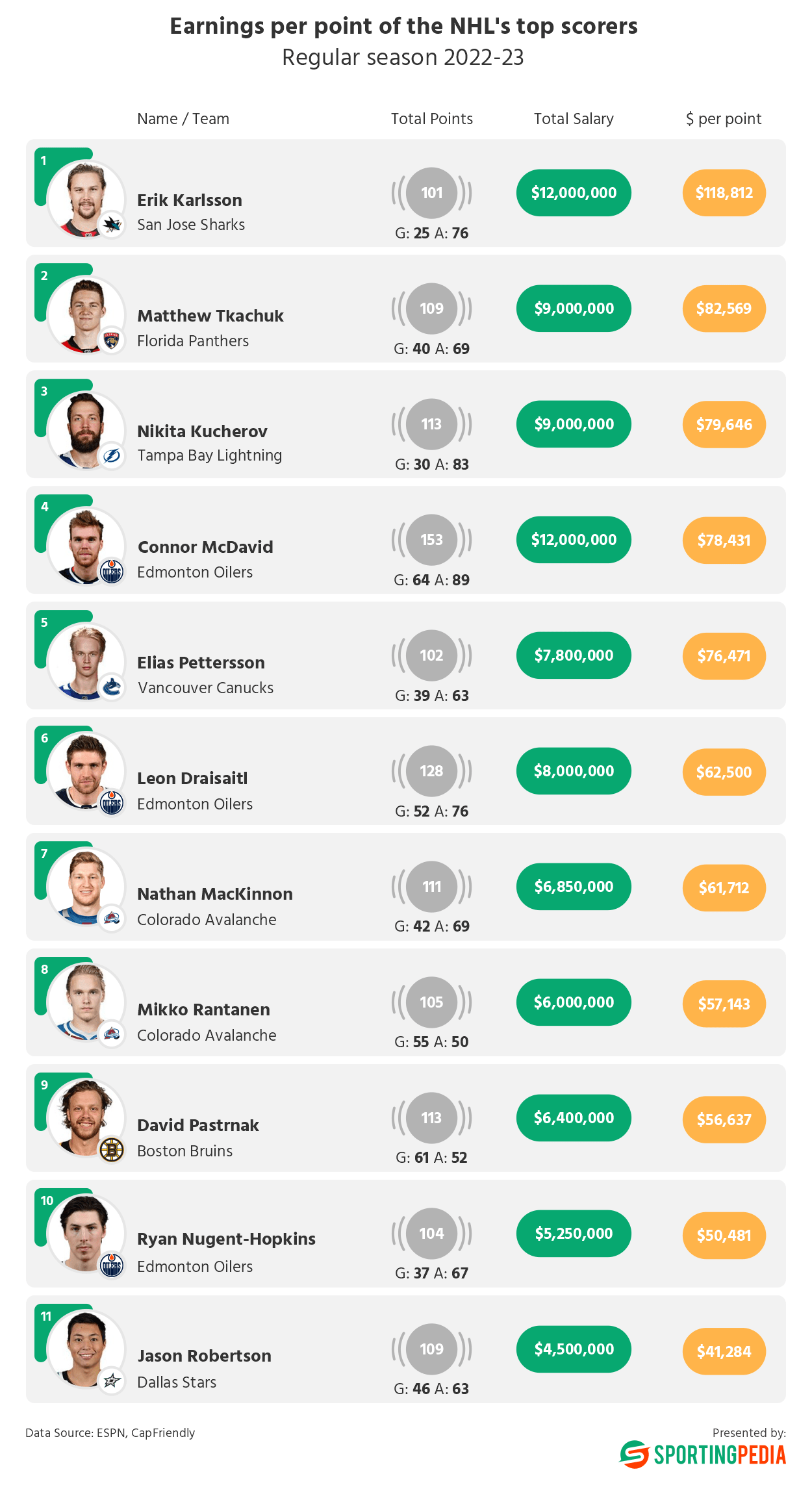Тhe Stanley Cup playoff games have just begun leaving another NHL regular season in the past. Eleven players in total reached the 100-point mark, but only 9 will take part in the playoffs. While Erik Karlsson and Elias Pettersson were among the highest scorers, their San Jose Sharks and Vancouver Canucks failed to qualify. SportingPedia’s latest report looks into how much money the highest scorers earned for each point they scored.


Key Takeaways:
- A total of 11 players have entered the 100-point club during the regular NHL season
- Salaries of the best scorers this season vary between $4.5 and $12 million
- Jason Robertson ended the campaign with 109 points and has the lowest earnings per point ratio at $41,284, turning him into the best value for money player
- On top of entering the list with the lowest tally of 101 points, Erik Karlsson’s massive $12 million contract makes him the worst value for money at $118,812 per point scored
- Of all 11, only Jason Robertson has a contract of less than $5,000,000 for the current season
- 2 franchises have multiple players on the list – Edmonton Oilers and Colorado Avalanche
- Only 8 of the 32 NHL teams had a player reach the coveted 100-point milestone during the season
Leading the pack in terms of total points were Connor McDavid and Leon Draisaitl, both of the Edmonton Oilers. McDavid, who finished the season with an impressive 153 points – the highest tally in the entire league pocketed $78,431 for each point. Draisaitl, ended with a total of 110 points, and pocketed $62,500 for each point he provided. While both players were undoubtedly valuable to the Oilers, their relatively high pay per point estimates indicate that they may not have been the most efficient use of salary dollars.
On the flip side, Jason Robertson from the Dallas Stars emerged as a great bargain with the lowest pay per point ratio – a mere $41,284. Amassing an inspiring 109 points on a salary of $4.5 million testified Robertson’s excellent return on investment.
While Robertson may have had the lowest pay per point value on the list, he was not the only player to offer good value to his team. David Pastrnak of the Boston Bruins had a pay per point value of $56,637. This indicates that while he may not have been the highest scorer on the list, he was still offering good value to the Bruins in terms of his production on the ice.
Interestingly, several players on the list had similar $ per point ratios, despite differences in the total points scored. Mikko Rantanen and Nathan MacKinnon of the Colorado Avalanche, for example, both had pay per point values in the $60,000 range, despite Rantanen scoring 105 points and MacKinnon being responsible for 111 points. In addition, MacKinnon is the player who entered the 100-point list with the fewest number of games, having featured in 71 matches for Colorado.
Overall, our analysis shows that while the total points scored is a valuable metric for assessing a player’s contribution to their team, it should not be the only factor under consideration. Pay per point analysis provides a more nuanced view of a player’s value, taking into account both the end product of players on the ice and the investment made on their team’s part.
